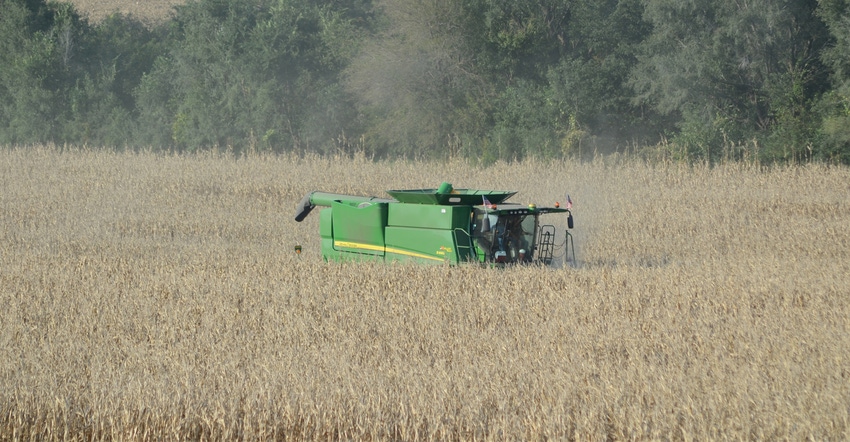
With farm program open enrollment deadlines approaching in March 2020, producers deciding between the Agriculture Risk Coverage and Price Loss Coverage programs have a lot to think about — especially considering the shift in the ag economic environment since the last enrollment period.
"If we go back to 2014 when these programs were introduced and producers had a single, one-time decision for the life of the farm bill, we were in a very different price environment," explains Brad Lubben, Nebraska Extension policy specialist. "We were coming off high prices, so the moving average price component from the ARC component offered strong coverage. The reference price for PLC had been increased in the 2014 Farm Bill, but it was still out of the money. So, ARC started out much stronger, and our enrollment decisions reflected that."
Of course, most corn and soybean producers enrolled in ARC. For wheat and grain sorghum growers, however, the choice wasn't as clear.
"Wheat and sorghum prices hadn't been quite as high, or the reference prices had moved a little higher relative to where prices were, which meant PLC was more relevant," Lubben adds. "When we looked at sign-up, about 55% of the base acres of wheat in Nebraska enrolled in PLC. Grain sorghum was about 43%. So, there was a much more even split between ARC and PLC. For corn and soybeans, it was 95%-plus enrolled in ARC."
With 2018 crop payments due at the end of October, Lubben notes the latest payments likely will reflect that ARC is effectively zeroed out.
"Now producers have a new decision under the new farm bill, and the economic outlook seems to be reversed," Lubben says. "At current prices, PLC is already in the money or nearly at it."
That's because the ARC program is based on a moving average, where benchmark revenue is equal to a five-year Olympic average price, multiplied by a five-year Olympic average yield. The guarantee kicks in at 86% of benchmark revenue. Based on trend yields and trends in corn and soybean prices (a five-year average of about $3.70 and $9.25, respectively), revenue protection would kick in about $3.20 per bushel for corn, and about $7.95 or $8 for soybeans.
On the other hand, PLC uses a specific legislated reference price based on a five-year Olympic average price using a trend-adjusted yield. The reference price for PLC was set at $3.70 for corn and $8.40 for soybeans in the 2014 Farm Bill.
That's why, Lubben says, there are widespread expectations and budget assumptions in the farm bill suggesting a large shift in enrollment toward PLC.
"Wheat and grain sorghum were already halfway there, and the expectation is they will go further," Lubben says. "Corn could flip almost entirely from ARC to PLC. Soybeans could remain one commodity where we're not sure about what direction to go. For soybeans, it's not as far apart, so the choice whether you want price protection or revenue protection still matters. We would expect a widespread shift toward PLC, but whether it will dominate like it might for corn, grain sorghum and wheat, we're not there yet."
However, it's important to remember the decision isn't as easy as comparing a $3.70- versus $3.20-per-bushel threshold (for corn) — you're comparing PLC price protection at $3.70 versus ARC revenue protection that would kick in with corn prices below $3.20 or yields below trend, or some combination of the two.
And there are other decisions to make as the deadline approaches — including an opportunity to update payments yields under PLC. The formula for updating payment yields under PLC is as follows: (90% of average yield from 2013 to 2017) multiplied by (national average yield from 2008 to 2012 divided by the national average yield from 2013 to 2017).
"The second choice is to the get the tools, the information you need, and use one of the online decision tools and study the ARC versus PLC choice," Lubben adds. "We can start to study that, but we don't have to decide today, and we can see how close or far apart those choices really are.
"Remember, this first decision is for 2019 and 2020. By the time the deadline approaches in March, we will have very good information on how 2019 turned out — not yet final numbers but very good estimates. We'll also have some expectations of what 2020 will look like. So, we'll be able to prejudge where we'll be before we sign up. That's one reason we've been telling producers not to rush this decision."
About the Author(s)
You May Also Like






